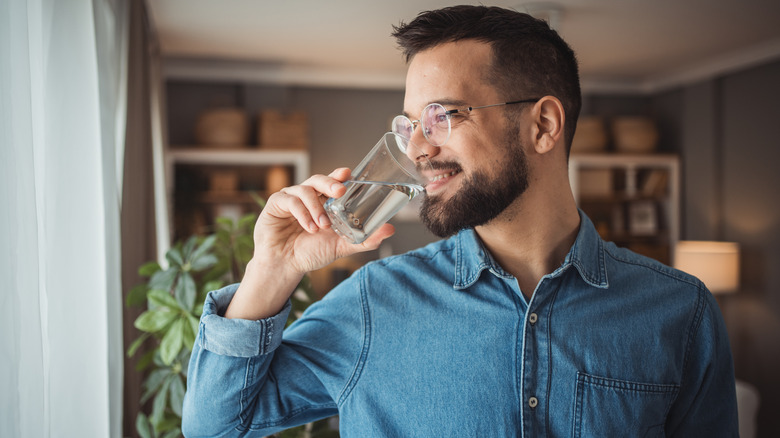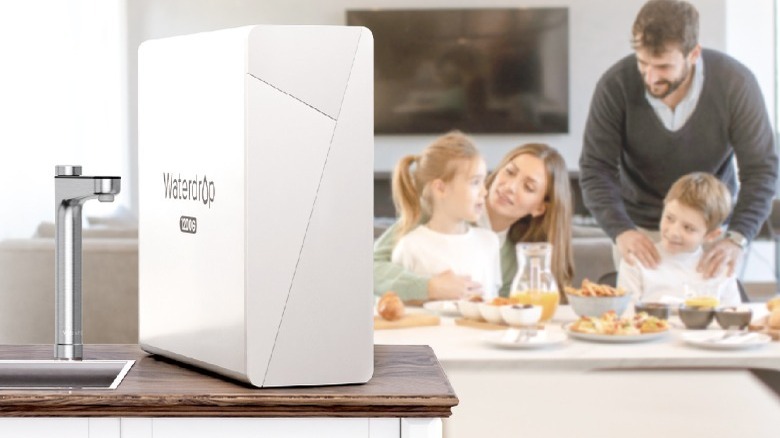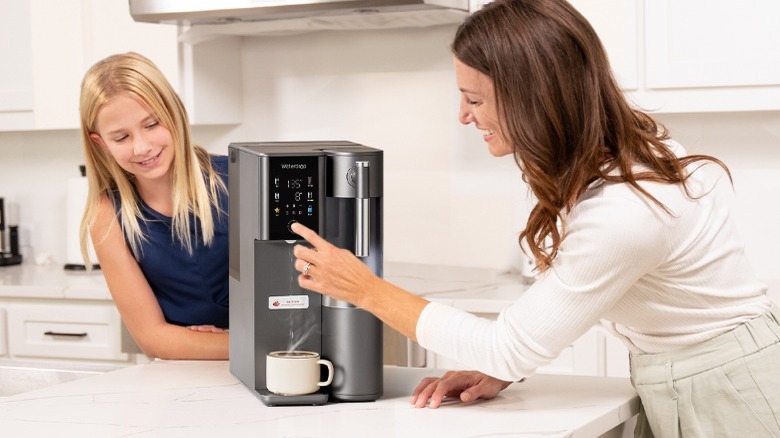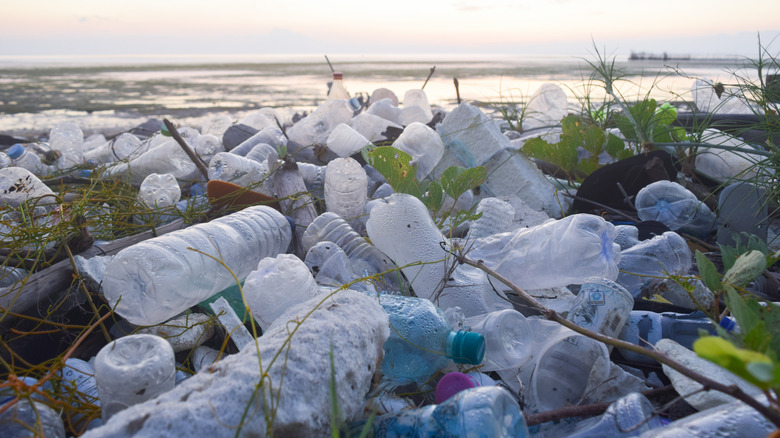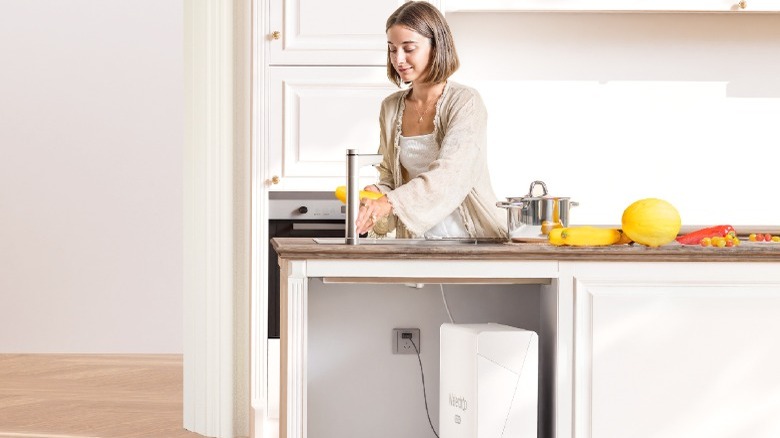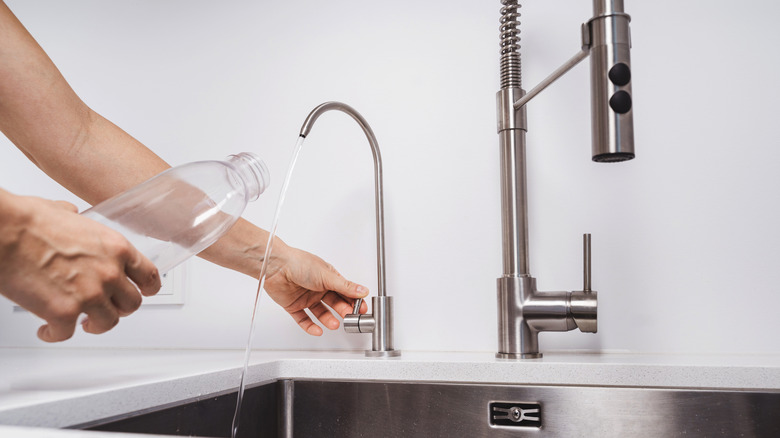5 Reasons To Invest In A Reverse Osmosis Water Filtration System
Sponsored Content. We may receive a commission on purchases made from links.
If you're anything like us, your home is filled with smart tech gadgets that make life more convenient. An Alexa or Google Assistant is probably on standby, waiting for you to play music or add items to your grocery list with a simple voice command. A video doorbell is likely watching your front porch, while a robot vacuum may be roaming your floors. However, your home is probably missing one incredibly important tech item: a reverse osmosis (RO) water filtration system.
While many popular home gadgets add convenience, RO water filtration systems can also benefit your health, safety, and quality of life. For example, Waterdrop Filter's RO systems remove harmful contaminants like chlorine, arsenic, lead, and more. This, in turn, improves the taste of the water. Those who want to live more sustainability will be pleased to discover that RO systems remove the need to buy single-use plastic water bottles, which can also lead to incredible savings over time. If you're looking for the ultimate smart upgrade to your home, check out why you should invest in an RO water filtration system.
Peace of mind that your drinking water is healthy and safe
Of course, the main benefit of a reverse osmosis filtration system is that it will filter out harmful contaminants, making water healthier and safer to drink. RO systems go through a multi-stage process that effectively removes both big particles of dirt as well as minuscule contaminants like dissolved salts, mercury, lead, bacteria, viruses, asbestos, and other harmful chemicals. This process can vary depending on the RO system's model, with some advanced options like the Waterdrop Filter X12 featuring an impressive 11 stages of filtration and 16 layers. This filter, along with the G3P800, also contains a UV Sterilizing Light that provides up to 99.9% sterilization.
When you're searching for an RO system that will provide healthy drinking water, look for one that's certified by the NSF/ANSI, like those provided by Waterdrop Filter. This certification means that the system meets rigorous public health requirements, ensuring that the filtered water is safe to consume.
Compared to other water filtration options, an RO system can be a much more effective and efficient way to get your hands on clean drinking water. According to a 2023 study, pitcher water filters can vary in their effectiveness depending upon the water quality. When it comes to bottled water, the verdict is similar: quality can vary depending on where it's sourced, and the water can also contain micro-plastics. Overall, RO systems are known to be safer and healthier than these other water filtration sources.
Your water will taste better, too
While some may claim that all water tastes the same, if you've ever drank from the tap and then a bottle, you know this isn't true. Even various water bottle brands can have different tastes. That's because natural minerals and additives affect the flavor. If you're drinking water from the tap or another faucet, residue from pipes and fixtures can also change the taste. When you use an RO system, the water is filtered after it flows through your pipes, and the process of filtering out harmful contaminants comes with the amazing benefit of improved taste.
While a pure, fresh flavor is obviously ideal when drinking water (and may encourage you to stay hydrated), it can also be beneficial when cooking by enhancing meals. Clean water can make your food taste better, especially if you invest in an RO system like the Waterdrop Filter A2. This countertop model provides not only cold water for drinking (down to 59 degrees Fahrenheit) but also hot water (up to 203 degrees Fahrenheit), which can be used for beverages like coffee and tea or even meals like oatmeal and stew. You can ensure that everything you consume tastes as pure as possible with an RO system.
However, there is one common concern that many face when researching RO systems: the filtering process can remove all the minerals from water, including the beneficial ones. While you want harmful contaminants like lead and asbestos to be filtered out, alkaline minerals like calcium and magnesium actually improve the taste — and health benefits — of water. Therefore, look for an RO filter that adds these back in after the filtering process. The Waterdrop Filter X12, for example, keeps beneficial minerals in your water and also adjusts the pH level of the water to about 7.5, ensuring that it tastes pure.
Think beyond yourself: RO systems benefit the environment
Besides practical benefits for yourself like healthier, safer, and purer water, RO systems also reduce your negative impacts on the planet. A new tech gadget that can improve your quality of life and curb wasteful practices – that's something we can get behind. In the case of RO systems, they can greatly reduce the usage of plastic water bottles, thereby keeping them out of landfills and the ocean.
Not only that, but the production and transportation of plastic bottles also leads to greenhouse gas emissions, which in turn harms the environment even further. When compared to the energy required to make plastic water bottles, RO systems are incredibly energy efficient. Furthermore, high-quality RO models can last for years, and they can sometimes even be recycled at the end of their life.
It's also crucial to choose an RO system that prioritizes sustainability, like the X12, G3P800, or A2 from Waterdrop Filter. These solutions feature a 3 to 1 pure water ratio. This means that only 1 cup of wastewater is created for every 3 cups of filtered water. The filters on these RO systems don't require frequent changing, either, helping to save the planet by producing less waste.
RO systems provide convenience and instant fresh water
Anyone who's ever had a pitcher filter knows how frustrating it can be to constantly have to refill it. This can lead you to drink less water or waste time waiting for it to filter. Of course, with an RO system, this is not an issue. You can get fresh water instantly, no waiting or refilling required.
When you're looking for an RO system that offers the most convenience, ensure you pay attention to the gallon flow rate. This indicates the amount of water the system can filter in a 24-hour period. If you have a large family, a system like the Waterdrop Filter X12 might be ideal, as it has a flow rate of 1,200 gallons. Even when used for drinking, cooking, and cleaning, this will provide more than enough clean water. The G3P800 may be the best option for a smaller family or couple, as it has a flow rate of (you guessed it) 800 gallons. Both these systems also have a fast flow of water, so you won't be waiting around for your glass to fill.
Also look for additional benefits that provide ease of use, like the smart faucets on Waterdrop Filters. These display the filter life, making maintenance a breeze. They also disclose the Total Dissolved Solids level, which will tell you exactly how pure your water is. Tankless designs that fit under the counter can save you precious counter space. On the other hand, there are countertop models like the Waterdrop Filter A2 that might be more up your alley. This hot and cold water system is the definition of convenient — it's portable, has a smart touch screen, and can remember your temperature preferences.
Balance cost with effectiveness
While there are many ways to filter water, an RO system is the best option for balancing cost-effectiveness with efficiency. The most expensive option is investing in a whole house water filter, which would treat water directly from your main line and provide clean water throughout your home. With this solution, every faucet would be purified. While this is generally a good option, unless you've got a few thousand dollars to drop, this may be out of your budget.
On the other hand, there are much cheaper options, but they don't provide the same guarantee of clean water. As explained, the effectiveness of pitcher filters is debated, making this option less than ideal, even with the low cost. When it comes to single-use plastic bottles, the water may not actually be properly filtered, they're not sustainable, and the cost can add up quickly.
Instead, while RO systems obviously come with an initial cost, it's much less than a full home filter. Furthermore, you can enjoy the peace of mind that your filter is effectively removing contaminants. Waterdrop Filter's X12 system is currently priced at $1,039, while the G3P800 model is more budget-friendly at $759. If you're looking for a countertop version instead of an under-sink system, Waterdrop Filter's A2 is very affordable at just $399. Check out all of Waterdrop Filter's best RO systems on WaterdropFilter.com and Amazon.
